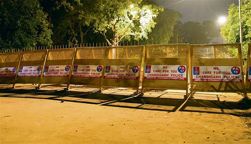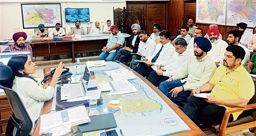Nitish Sharma
Tribune News Service
Ambala, June 20
The direct seeding of rice (DSR) technique continues to receive a lukewarm response from farmers across the state.
This year, the government had set a target of 33,000-acre demonstration plots spread over 11 districts of the state under the Rashtriya Krishi Vikas Yojana. It gives a subsidy of Rs 3,000 per acre on demonstration plots, but the Agriculture Department has received applications for nearly 13,550 acres.
The technique involves direct sowing of rice rather than the conservative transplantation method. The Agriculture Department says it requires less water, labour and electricity and was considered a better technique in view of the depleting water table.
However, an official of the Agriculture Department said: “Excessive weeds, online registration and delay in transfer of subsidy have been major obstacles in achieving the target.”
Meanwhile, today was the last date to apply for the demonstration plots. The website of the Agriculture Department says that of the total targeted districts, only Jind and Sonipat districts had surpassed the targets of 2,500-acre each. However, Ambala, Yamunanagar, Karnal, Kurukshetra, Palwal, Panipat, Sirsa, Kaithal and Fatehabad have failed to achieve their targets.
In Ambala and Yamunangar districts, the department has received applications for setting up demonstration plots on nearly 725-acre and 1,388-acre, respectively, against the set targets of 3,000-acre each. In Palwal district, the department has received applications for 1,480-acre against the target of 2,500-acre. In Karnal and Kurukshetra, too, applications for nearly 1,000-acre and 687-acre, respectively, have been received against the target of 4,500-acre, each.
Pradeep Chauhan, a farmer from Smalkha village, said: “Last year, I had sown Pusa-1121 variety in four acres using the DSR technique. Undoubtedly, it is cheaper, but I failed to get better returns due to excessive weeds. It is very had to control the weeds, so I have decided not to use this technique this year.”
Meanwhile, Deputy Director Agriculture, Ambala, SS Yadav said: “The reluctance of the farmers to leave conservative methods for adopting newer techniques and excessive weeds are the major issues due to which the technique has not been getting the desired response. Besides, due to some extra hard work required and slower plant growth in the beginning, farmers prefer the conservative method. Weeds are an issue, but it can be controlled to some extent. Moreover, better results can be achieved by providing the inputs (seeds and weedicides) to the farmers.”


























